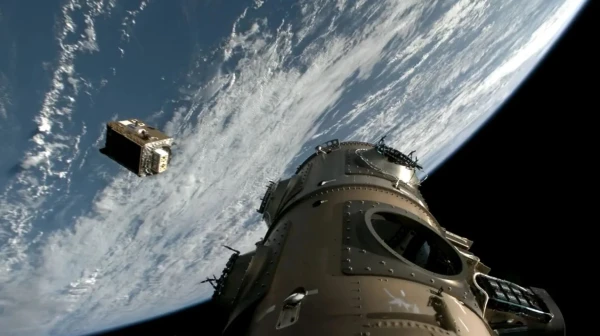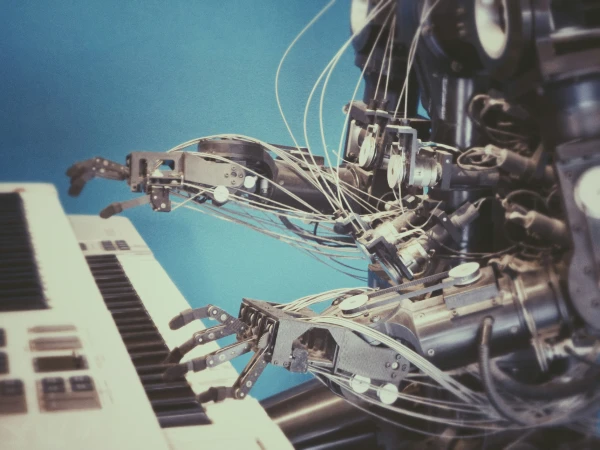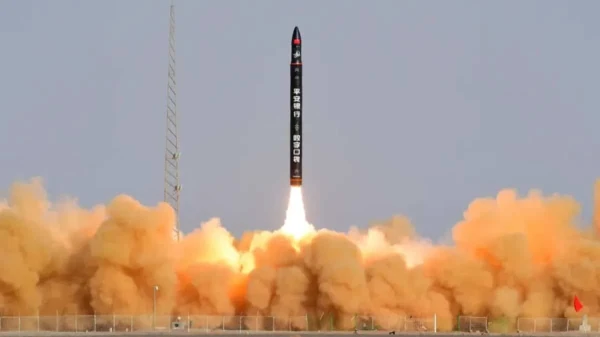
These will be satellite groupings that maintain communication via laser.
Data for the computer industry needs to be processed in space, believe Google, SpaceX, and Blue Origin. An experimental satellite with the most powerful processor in the history of space exploration has already been sent into orbit.
Tech billionaires propose a bold solution — to place data centers in low Earth orbit. Solar panels will provide them with energy, and the environmental costs will only be incurred during the production and launch stages.
Jeff Bezos, founder of Amazon and owner of the space company Blue Origin, believes that within the next 20 years, space data centers will become more profitable than their terrestrial counterparts. In March 2025, former Google CEO Eric Schmidt acquired the company Relativity Space, which is working on manufacturing space rockets using 3D printing. Later, the businessman clarified that he is specifically interested in creating space data centers. Elon Musk recently stated on social media that his company SpaceX will be engaged in creating data centers based on the third modification of Starlink satellites (Starlink V3). Google is also involved: on November 4, the company published a press release about the Suncatcher project. The corporation plans to launch an "experimental mission" into space by early 2027.
Meanwhile, on November 2, SpaceX's Falcon 9 rocket launched the Starcloud-1 satellite, belonging to the startup Starcloud, into orbit. On board the small device weighing 60 kg is the latest Nvidia H100 graphics processor. This processor, introduced just two years ago, is likely the most powerful ever sent into space. The goal of the 11-month tests is to check how it performs in orbit. The space startup, founded less than two years ago, is already discussing a space data center with a capacity of 5 GW, powered by a solar panel with an area of 4 km².
First of all, what orbit should the data center be launched into? It would be good to hover over a single point on the Earth's surface to maintain constant communication with the Earth. This means a geostationary orbit at an altitude of about 36,000 km. Launching to it is an expensive endeavor, and it is also densely packed with communication satellites. The authors of the preprint propose an alternative solution: a "sunrise-sunset" orbit at an altitude of 650 km. In such an orbit, the satellite does not experience night. Its solar panels are constantly illuminated either by the rising or setting sun, depending on which hemisphere of the planet it is over.
However, the first difficulty arises: continuous communication with the data center will not be possible. At such a low orbit, the satellite will only briefly appear in the field of view of ground stations and will return only on the next orbit. In total, this may amount to a few hours of communication per day. How to transmit the massive amounts of information that the data center must process and unload the results? The authors do not provide an answer, merely noting that communication with the Earth can be maintained via a laser beam. Laser communication "space-Earth" has already been tested. In experiments, a data transmission speed of 200 Gbit/s has been achieved. This is roughly equivalent to the bandwidth of fiber optic communication lines with data centers, but those are connected around the clock.
Launching a device the size and mass of a modern data center into orbit is practically impossible. Experts propose an elegant solution: the data center should not be a monolithic structure but a grouping of dozens of satellites that maintain communication with each other again via a laser beam. However, communication between different parts of the data center must be even faster — up to 10 Tbit/s. The authors suggest achieving this by having the satellites fly in an unprecedentedly tight swarm. At a speed of nearly 8 km/s, the distance between neighboring devices must be maintained at only 100–200 meters. This distance will also continuously fluctuate, obeying the laws of celestial mechanics. This is considering that the gravitational field over different points on Earth varies slightly — it has its own "pits" and "hills." Additionally, remnants of the atmosphere will slow down the satellites. The authors acknowledge that such advanced maneuvering exceeds current technology capabilities but hope that AI will provide the necessary control precision.
A long-standing concern for space engineers is the vulnerability of electronics to cosmic radiation. Charged particles racing through the universe penetrate microchips. At best, this can cause a malfunction, and at worst, complete failure. Therefore, special radiation-resistant electronics are sent into space. This resilience comes at the cost of reduced computational power. Before the launch of Starcloud-1, the most powerful processor outside of Earth was likely the Mars helicopter Ingenuity. It was equipped with a Snapdragon 801 — a rather ordinary smartphone processor with a clock speed of 2.26 GHz. It conducted its interplanetary flight turned off, as cosmic radiation is only dangerous for powered electronics. The Ingenuity onboard computer was turned on only in the Martian atmosphere, which provides some protection from radiation.
Google specialists claim to have conducted experiments on their own TPU V6e Trillium Cloud processors. The experimenters irradiated the equipment with protons at an energy of 67 MeV, simulating cosmic rays. The processors continued to operate without significant failures, even receiving a dose significantly higher than calculated. This is an interesting result, but one should not be too optimistic. Cosmic rays have a complex composition, and particles of much greater energy are encountered. In general, reproducing the effect of prolonged cosmic radiation in a short ground experiment is a challenging task. The decisive factor will be the testing of commercial processors in orbit, which was initiated by Starcloud-1. However, it is quite hard to believe that for all these years, the vast space industry has been on a "computational diet" without good reason.













